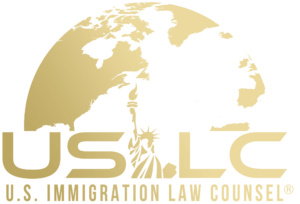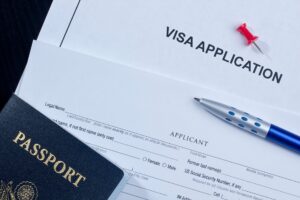If you are an international student who wants to pursue vocational education in the United States, you may have considered the M-1 vocational student visa. There are many visa options for international students, but you will first need to look into the eligibility requirements to better understand which visa is suitable for your situation. Before applying for this type of vocational student visa, you first need to understand the M-1 visa rules the USCIS has established. Here is everything you need to know about the M-1 student visa requirements, processing time, and application process.
What is the M-1 Student Visa?
There are many different types of visas provided specifically for students who want to come to the United States to enroll in specific educational programs. The M-1 vocational student visa is also designed for foreign students who want to enroll in vocational studies in the U.S. These vocational studies can include things like flight school, culinary arts, mechanics, cosmetology, and other non-academic programs.
Keep in mind that the M-1 visa is not designed for academic courses. If you wish to come to the United States to enroll in academic classes, you will need to apply for something like the F-1 student visa instead. Also, if the non-academic program or classes you wish to join are online and do not require physical attendance, you will not be eligible to get a student visa.
Another thing to understand about the M-1 visa rules is that this non-immigrant permit will only be valid for a year. However, you can apply for an extension up to three years to complete your vocational studies.
In some instances, you may want to bring your immediate relatives to join you in the United States when you are attending your vocational course. There are limitations to this when you have an M-1 student visa, which only allows you to bring your spouse and unmarried children under the age of 21. If you are approved for an M-1 student visa and you wish to bring your family with you, you will need to apply for an M-2 visa.
Another thing to keep in mind if you are bringing immediate relatives with you is that they are not permitted to study or work in the United States for the duration of their stay, and they must leave when your visa expires.
M-1 Student Visa Requirements
The good news for international students who want to study in the United States is that the M-1 visa requirements are quite straightforward. In order to qualify for an M-1 student visa, you have to satisfy the following requirements:
- You must be enrolled as a full-time student in either a non-academic or vocational program.
- Your program has to be approved by the Student and Exchange Visitors Program or SEVP.
- You must have a high level of proficiency in English or be enrolled in an English language class.
- You must have a residence outside of the U.S.
- You have to be financially self-sufficient during your studies in the U.S.
If you are still unsure of whether or not you qualify for a M-1 vocational student visa, you need to hire an immigration attorney. An attorney will have experience with student visas and can help you decide if the M-1 visa is the right fit for you or if a different student visa would be better.
Applying For an M-1 Student Visa
The first step of applying for an M-1 vocational student visa is to successfully enroll in an SEVP-approved program. Once you do that, you will be in the system and you will have to pay the SEVIS I-901 fee. You will also receive form I-20, which you will need later on when you go to your visa interview.
It is strongly recommended that you first get the assistance of an immigration attorney to help you throughout the application process. This will ensure that you follow every step correctly and avoid common mistakes that can slow down your application.
Filing
You will need to go to your local U.S. embassy or consulate to file your application for an M-1 visa. Every embassy will have slightly different rules, so you will need to do a bit of research into your local embassy before you fill out form DS-160. You will need to provide a photograph that meets the state department regulations, and you need to hold onto your confirmation page so that you can bring it to your interview later on.
The Interview
Once you have filed your application, you need to schedule an interview at the consulate or U.S. Embassy in your country of residence. You will also need to bring the I-20 form signed by you and an official from your study program, a valid passport, your DS-160 confirmation page, your photo, and your application fee receipt. Depending on the situation, you may also be asked to provide additional documents that show your qualifications, such as proof that you have the finances to pay during your time in the U.S., standardized test scores, certificates, diplomas, etc.
A consular officer will use the interview process to ask questions to better determine if you qualify for an M-1 vocational student visa. You can usually expect to learn if you have been approved or denied directly after the interview.
M-1 Visa Processing Time
When you apply for an M-1 student visa, you need to make an appointment at your local U.S. embassy or consulate. The wait time for appointments is entirely dependent on the country from where you are applying. For instance, in London, the average wait time is 14 days.
For up-to-date and accurate wait times for M-1 student visas, you can use the U.S. Department of State visa appointment wait time tool.
Hire an Immigration Attorney Today
Are you ready to apply for an M-1 vocational student visa so that you can come to the U.S. to study? Contact us today at U.S. Immigration Law Counsel at 800-666-4996 to speak with an immigration attorney about your situation. We will deal with the government, so you don’t have to!




